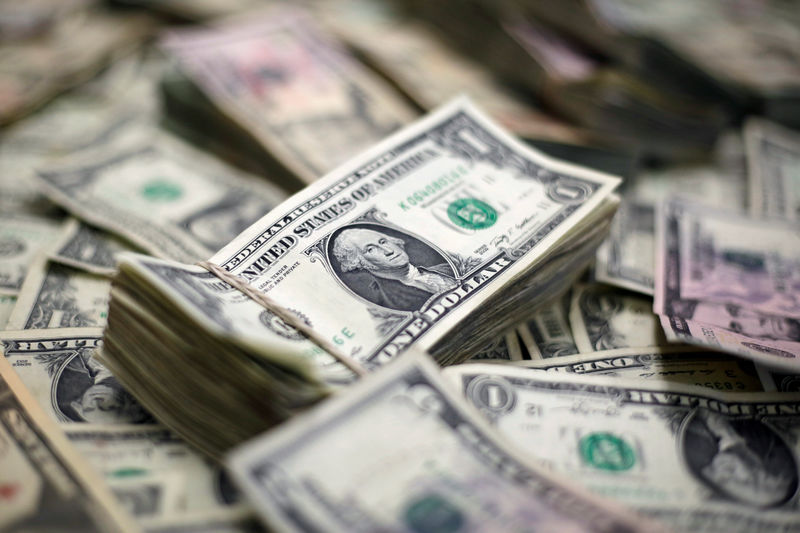Dollar Edges Lower; Euro Recovery Gains Traction
2022.08.31 10:30

By Peter Nurse
Investing.com – The U.S. dollar drifted lower in early European trade Wednesday, retreating from the 20-year peak seen earlier in the week as a nascent rebound in the euro gathers pace.
At 3:00 AM ET (07:00 GMT), the U.S. Dollar Index, which tracks the greenback against a basket of six other currencies, traded 0.1% lower to 108.662, after starting the week at a new two-decade high at 109.48.
The latest U.S. employment data, the JOLTS report on job openings, pointed to continued strength in the labor market despite the string of large rate hikes by the Federal Reserve.
This, combined with continued hawkish comments from a number of Fed officials, point to the U.S. central bank hiking by a probable 75 basis points in September.
However, the dollar is struggling to make any further headway as European Central Bank members have joined the fight to combat inflation, also expressing strong determination to do so at the Jackson Hole symposium.
The ECB must act decisively to contain inflation, Bundesbank chief Joachim Nagel said on Tuesday, while Belgian central bank Chief Pierre Wunsch said interest rates need to rise to a level that starts to restrict economic activity or above what is considered the “neutral” rate.
The euro plays a big role in the overall direction of the greenback, making up almost 60% of the dollar index, and this hawkish testimony has helped the single currency climb over 1% from its Aug. 23 two-decade low.
With this in mind, the Eurozone August CPI release will be in focus later Wednesday, with annual inflation expected to accelerate to 9.0% from 8.9% in July, well above the ECB’s 2% target.
The Eurozone and the U.K. are both heading for recessions this year, Goldman Sachs said, in a recent note, but surging inflation will still force the region’s two biggest central banks to raise interest rates sharply.
EUR/USD rose 0.1% to 1.0017, while GBP/USD rose 0.2% to 1.1680, with Goldman Sachs warning that U.K. inflation could top 22% next year if natural gas prices remain elevated in the coming months.
USD/JPY fell 0.3% to 138.39, after data showed Japanese retail sales grew more than expected in July.
USD/CNY fell 0.2% to 6.8952, with the Chinese yuan benefiting from data showing manufacturing activity shrank slightly less than expected in August – the manufacturing purchasing managers index coming in at 49.4, slightly above expectations of 49.2.
The risk-sensitive AUD/USD rose 0.6% to 0.6895, boosted by the signs of recovery in the Chinese manufacturing sector, given Australia is a major exporter of commodities to China.








